Top 12 Best Places To Visit In France
Posted on May 12, 2023 by Admin
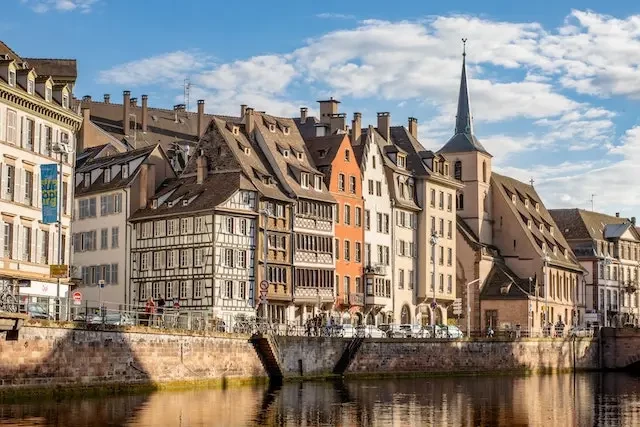
France, renowned for its rich history, breathtaking landscapes, and artistic heritage, is a dream destination for travelers around the world. From iconic landmarks to charming villages, this country offers a plethora of enchanting places to explore. Whether you're an art enthusiast, a history buff, or a nature lover, France has something to captivate everyone. In this article, we'll take you on a journey through the top 12 best places to visit in France, uncovering the beauty and wonders that await you.
Table of Content
- Paris: The City of Lights
- The Magnificent French Riviera
- Provence: A Tapestry of Colors and Scents
- The Enchanting Loire Valley
- Mont Saint-Michel: A Timeless Wonder
- Bordeaux: A Haven for Wine Lovers
- The Majestic French Alps
- Strasbourg: A Blend of Cultures
- The Picturesque French Countryside
- The Glamour of the French Riviera
- Normandy: A Historical Gem
- Lyon: Gastronomy and Renaissance Architecture
- The Charming French Basque Country
- FAQs
1. Paris: The City of Lights
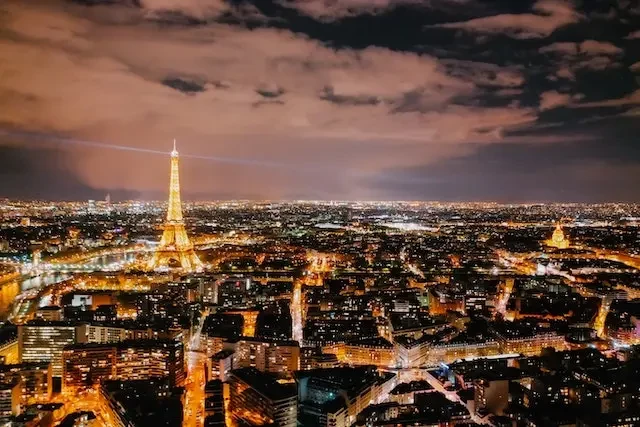
Paris, the capital of France, needs no introduction. Paris, often referred to as the "City of Lights," is a captivating destination known for its rich history, stunning architecture, world-class cuisine, and vibrant cultural scene. Let's explore why Paris earned this nickname and discover the best time to visit this enchanting city.
The nickname "City of Lights" has multiple origins. One explanation is that Paris was one of the first cities in the world to install street lighting on a large scale in the 19th century, illuminating its grand boulevards, landmarks, and bridges, giving the city a magical ambiance at night. Another interpretation of the nickname refers to Paris's historical and intellectual enlightenment during the 18th century, when the city became a center of philosophy, art, and ideas.
When it comes to the best time to visit Paris, each season offers a unique experience:
- Spring (March to May): Springtime in Paris is characterized by blooming flowers, milder temperatures, and longer daylight hours. It's a delightful time to explore the city's picturesque parks, such as the famous Jardin du Luxembourg and Tuileries Garden. Additionally, spring sees fewer tourists compared to the peak summer season.
- Summer (June to August): The summer months bring warm weather and a festive atmosphere to Paris. The city comes alive with outdoor events, concerts, and festivals. However, it is important to note that summer is also the peak tourist season, so popular attractions can be crowded.
- Fall (September to November): Autumn in Paris offers pleasant temperatures and beautiful foliage as the city's parks and gardens transform into a palette of warm colors. This season is ideal for strolling along the Seine River or exploring iconic landmarks like the Eiffel Tower and Notre-Dame Cathedral with fewer crowds.
- Winter (December to February): Winter in Paris is chilly, but it can be a magical time to visit. The city adorns itself with festive decorations, and you can experience the charm of Parisian Christmas markets and ice skating rinks. The city's museums and galleries also offer shelter from the cold, allowing you to explore its rich cultural heritage.
2. The Magnificent French Riviera
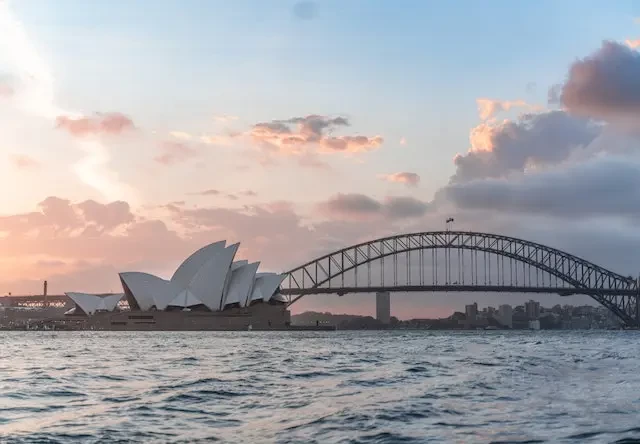
The French Riviera is a glamorous coastal region that stretches along the Mediterranean Sea. Home to luxurious resorts such as Cannes, Nice, and Saint-Tropez. Enjoy sun-kissed beaches, stroll along the Promenade des Anglais, and immerse yourself in the vibrant nightlife. The French Riviera is where beauty meets opulence, making it a must-visit destination for travelers seeking elegance and charm.The French Riviera, also known as the Côte d'Azur, is a glamorous and picturesque region located along the southeastern coast of France. Renowned for its stunning beaches, luxury resorts, vibrant nightlife, and charming coastal towns, the French Riviera offers a truly magnificent experience. Let's delve into what makes this region so special and discover the best time to visit.
The French Riviera boasts a Mediterranean climate, characterized by mild winters and hot summers. The region is blessed with abundant sunshine throughout the year, making it an appealing destination regardless of the season. Here are the main factors to consider when deciding on the best time to visit the French Riviera:
- Summer (June to August): Summer is the high season on the French Riviera, attracting a large number of tourists seeking sun, sand, and sea. The weather during this time is hot and ideal for beach activities and water sports. The coastal towns and cities, such as Nice, Cannes, and Saint-Tropez, come alive with lively festivals, glamorous events, and bustling nightlife. However, it's important to note that summer can be crowded, and prices for accommodation and attractions tend to be higher.
- Spring (March to May) and Fall (September to November): These shoulder seasons offer pleasant weather and fewer crowds compared to summer. Springtime on the French Riviera brings blooming flowers, mild temperatures, and a sense of renewal. It's an excellent time to explore the region's charming towns, visit museums, and indulge in outdoor activities. Similarly, autumn offers comfortable temperatures, especially in September and October, making it an ideal time for sightseeing and enjoying the beautiful coastline.
- Winter (December to February): The French Riviera experiences mild winters, with temperatures rarely dropping below freezing. While the region may not be as bustling during this time, it has its own unique charm. You can enjoy peaceful walks along the beaches, visit local markets, and explore cultural attractions without the summer crowds. Additionally, winter is a great time to take advantage of lower prices on accommodation and experience a more authentic and tranquil side of the French Riviera.
3. Provence: A Tapestry of Colors and Scents
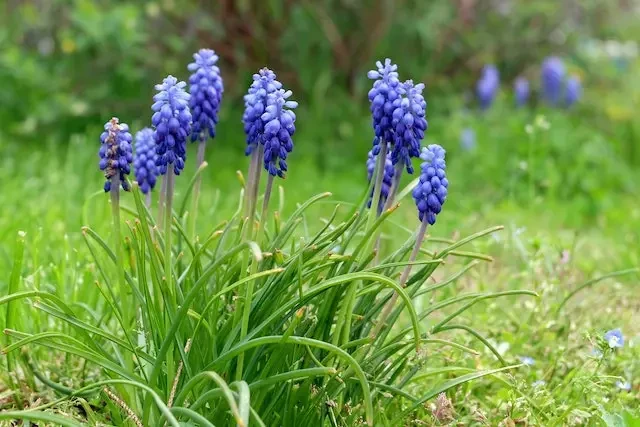
Provence is a region in southeastern France that enchants visitors with its vibrant colors and delightful scents. Known for its picturesque landscapes, charming villages, and fields of lavender, Provence offers a sensory feast for the soul. From the moment you set foot in this idyllic region, you'll be captivated by its unique charm and beauty.
Exploring the Lavender Fields
One of the highlights of visiting Provence is witnessing the breathtaking beauty of its lavender fields. From mid-June to early August, the countryside is adorned with vibrant purple hues, creating a stunning spectacle. The fragrant scent of lavender fills the air, transporting you to a world of tranquility and serenity. The Plateau de Valensole is particularly renowned for its vast lavender fields, providing a picturesque backdrop for unforgettable photos and moments of pure bliss.
Charming Villages and Towns
Provence is dotted with enchanting villages and towns that exude an irresistible allure. Places like Gordes, Roussillon, and Saint-Rémy-de-Provence are steeped in history, with their narrow cobblestone streets, ancient stone houses, and charming squares. Stroll through the vibrant local markets, where you can taste delicious regional products and immerse yourself in the authentic Provençal way of life. The warmth and hospitality of the locals add an extra layer of charm to these idyllic settings.
The Provençal Cuisine
No visit to Provence would be complete without savoring its exquisite cuisine. The region boasts a culinary tradition deeply rooted in fresh, local ingredients and bold flavors. Indulge in classic dishes like bouillabaisse (a flavorful fish stew), ratatouille (a vegetable medley), and pissaladière (a savory onion tart). Provençal cuisine is characterized by the generous use of aromatic herbs such as thyme, rosemary, and basil, enhancing the flavors of the dishes and providing a true taste of the region.
The Best Time to Visit
The best time to visit Provence depends on your preferences and what you wish to experience. If you want to witness the blooming lavender fields, plan your visit between mid-June and early August. During this period, the countryside is awash with purple blossoms, creating a mesmerizing sight. The weather is warm and sunny, perfect for outdoor activities and exploring the charming villages.
4. The Enchanting Loire Valley
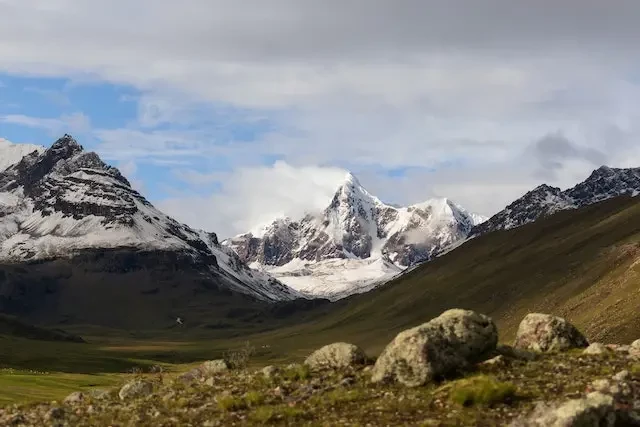
The Loire Valley is a region in central France that is widely celebrated for its enchanting beauty, rich history, and remarkable architecture. Stretching along the banks of the majestic Loire River, this picturesque area is known for its stunning châteaux (castles), charming vineyards, and lush landscapes. Let's delve into what makes the Loire Valley so captivating.
- Châteaux: The Loire Valley is home to an impressive collection of châteaux, which are architectural masterpieces that showcase different styles and periods. These grand castles, such as Château de Chambord, Château de Chenonceau, and Château de Blois, exhibit Renaissance and Gothic influences and offer a glimpse into the region's royal past. Exploring these châteaux allows visitors to immerse themselves in history, wander through opulent rooms, and stroll through meticulously manicured gardens.
- Natural Beauty: The Loire Valley's natural landscape is breathtaking. The region is characterized by rolling hills, lush vineyards, and meandering rivers. It is often referred to as the "Garden of France" due to its verdant countryside. The Loire River, the longest river in France, adds to the charm of the region, offering opportunities for leisurely boat rides, riverside picnics, and scenic walks along its banks.
- Wine Country: The Loire Valley is renowned for its wine production. The region is dotted with vineyards and wineries that produce a variety of exceptional wines, including white, red, rosé, and sparkling varieties. Wine enthusiasts can embark on tasting tours, visit wineries, and learn about the winemaking process while savoring the flavors of the region.
- Cultural Heritage: The Loire Valley has been recognized as a UNESCO World Heritage site due to its exceptional cultural landscape. Beyond the châteaux, the region boasts charming towns and villages with cobblestone streets, historic churches, and local markets that showcase the traditional way of life. It's an opportunity to immerse oneself in the region's cultural heritage and experience the warmth and hospitality of its inhabitants.
The best time to visit the Loire Valley largely depends on personal preferences and interests:
- Spring (April to June) and Fall (September to October): These seasons offer mild temperatures, fewer tourists, and beautiful scenery. Springtime brings blossoming flowers and vibrant colors, while autumn offers a stunning display of foliage. It is an ideal time for exploring the châteaux, vineyards, and outdoor activities.
- Summer (July to August): The summer months are popular for visiting the Loire Valley, thanks to longer days, pleasant weather, and various cultural events and festivals. However, it is also the peak tourist season, so popular attractions may be crowded.
- Winter (November to March): While the Loire Valley is quieter during the winter months, it still holds its charm. It's a great time to enjoy the region's cozy atmosphere, visit the châteaux without the crowds, and indulge in hearty French cuisine.
5. Mont Saint-Michel: A Timeless Wonder
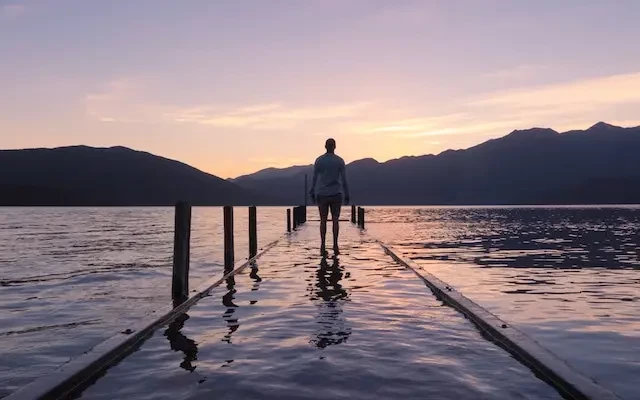
Mont Saint-Michel is a breathtaking island commune situated in Normandy, France. It is one of the most iconic landmarks in the country and is often referred to as a "Timeless Wonder." This magnificent site combines natural beauty, medieval architecture, and a rich history, making it a must-visit destination. Let's explore what makes Mont Saint-Michel so remarkable.
- Unique Island Setting: Mont Saint-Michel is located on a rocky islet just off the coast of Normandy, surrounded by vast tidal flats. This isolated location creates a stunning visual spectacle, especially during high tide when the island appears to be rising from the sea, surrounded by shimmering waters. The island itself is crowned by the majestic Abbey of Mont Saint-Michel, standing proudly atop the rocky pinnacle.
- Architectural Marvel: The Abbey of Mont Saint-Michel is a masterpiece of medieval architecture. The abbey's construction began in the 8th century and continued for several centuries, resulting in a blend of architectural styles ranging from Romanesque to Gothic. The abbey's spires, cloisters, and intricate stonework showcase the skilled craftsmanship of the time. Exploring the abbey allows visitors to admire its grandeur, visit its chapels and halls, and soak in the spiritual ambiance.
- Historical Significance: Mont Saint-Michel has a rich and storied history. Originally established as a strategic fortification, it later became a center of pilgrimage and monastic life. Over the centuries, the island and abbey witnessed numerous battles, sieges, and expansions. The intricate labyrinthine streets, ancient walls, and defensive structures tell tales of the island's military past. Today, it stands as a symbol of France's cultural heritage and attracts millions of visitors each year.
- Scenic Surroundings: The entire bay surrounding Mont Saint-Michel is a designated UNESCO World Heritage site. The tidal flats and shifting sands create a dramatic and ever-changing landscape. During low tide, the bay transforms into an ethereal panorama, revealing vast stretches of sand and intricate patterns formed by water channels. This unique environment also supports a diverse ecosystem of birds, marine life, and plants.
The best time to visit Mont Saint-Michel depends on tidal conditions and personal preferences:
- High Tide: Witnessing the island surrounded by water during high tide offers a stunning and magical experience. It is advisable to check the tidal charts in advance to plan your visit accordingly.
- Low Tide: Exploring the tidal flats during low tide allows visitors to walk to the island on the exposed sandy terrain and observe the fascinating interplay between land and sea. However, be aware of the time window when access to the island is possible.
- Mont Saint-Michel can be quite popular, especially during peak tourist seasons. To enjoy a more peaceful experience, consider visiting early in the day or during the shoulder seasons of spring or fall.
6. Bordeaux: A Haven for Wine Lovers

Bordeaux is a city in southwestern France that is renowned worldwide as a haven for wine lovers. Situated in the heart of the famous Bordeaux wine region, this vibrant city offers a unique blend of history, culture, and, most notably, exceptional wines. Let's explore what makes Bordeaux a paradise for wine enthusiasts.
- Wine Heritage: Bordeaux has a long and illustrious wine heritage dating back centuries. The region is renowned for its production of some of the finest wines in the world. Bordeaux wines are known for their complexity, elegance, and aging potential. The area is home to numerous prestigious vineyards and wineries, where visitors can learn about the winemaking process, taste a variety of wines, and gain insights into the region's rich viticultural traditions.
- Vineyards and Châteaux: The Bordeaux region boasts picturesque vineyards and stunning châteaux, creating a captivating backdrop for wine exploration. From the sprawling estates of the Médoc to the rolling hills of Saint-Émilion, the landscapes are a sight to behold. Many vineyards and châteaux offer tours and tastings, allowing visitors to immerse themselves in the wine culture, walk through the vineyards, and appreciate the beauty of the countryside.
- Wine Museum: Bordeaux is also home to the Cité du Vin, a unique wine museum that showcases the history, diversity, and cultural significance of wine. This contemporary museum offers interactive exhibits, informative displays, and wine workshops that provide a comprehensive understanding of wine production, different wine regions, and the art of wine tasting. It's an excellent opportunity to deepen your knowledge and appreciation of wine.
- Gastronomy and Wine Pairing: Bordeaux's wine culture is closely intertwined with its exceptional gastronomy. The city is dotted with charming restaurants and bistros that offer delectable cuisine paired with local wines. Bordeaux is celebrated for its traditional dishes, such as entrecôte bordelaise (steak with a rich red wine sauce) and cannelés (delicate pastries flavored with rum and vanilla). Exploring the city's culinary scene provides an opportunity to savor the region's wines alongside delicious regional specialties.
The best time to visit Bordeaux for wine lovers largely depends on personal preferences:
- Harvest Season: The harvest season, typically taking place from late August to October, is an exciting time to visit Bordeaux. Vineyards are abuzz with activity as grapes are harvested, and wineries are bustling with energy. It's an opportunity to witness the winemaking process firsthand and participate in grape picking or other harvest-related activities.
- Spring and Summer: Spring and early summer are ideal for exploring the vineyards, as the weather is pleasant, and the region is in full bloom. It's a great time to visit the wineries, attend wine festivals, and witness the vibrant colors of the countryside.
- Off-Peak Season: Visiting Bordeaux during the off-peak season, such as late autumn or winter, offers a quieter and more intimate experience. It allows for deeper interactions with winemakers, the opportunity to discover hidden gems, and the chance to enjoy wine tastings and vineyard tours with fewer crowds.
7. The Majestic French Alps
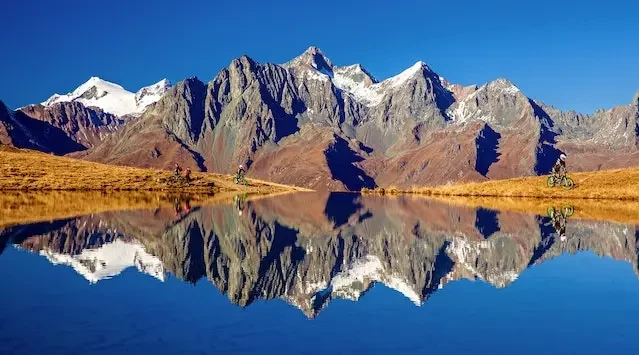
The French Alps, a majestic mountain range located in southeastern France, is a breathtaking destination that captivates visitors with its awe-inspiring beauty and a wide array of outdoor activities. Stretching across multiple regions, including Savoie, Haute-Savoie, and Isère, the French Alps offer a stunning combination of towering peaks, picturesque valleys, crystal-clear lakes, and charming alpine villages. Let's delve into what makes the French Alps so majestic.
- Spectacular Mountain Scenery: The French Alps are renowned for their dramatic landscapes. Towering peaks, such as Mont Blanc, the highest mountain in Western Europe, dominate the horizon. The rugged mountain ranges, snow-capped summits, and pristine glaciers create a postcard-perfect scenery that leaves visitors in awe. The panoramic views from various vantage points are simply breathtaking, offering a sense of tranquility and a connection with nature.
- Outdoor Activities: The French Alps provide a playground for outdoor enthusiasts. During the winter months, the region is a haven for skiers and snowboarders, boasting world-class ski resorts, such as Chamonix, Courchevel, and Megève. These resorts offer a wide range of slopes for all skill levels, as well as other activities like snowshoeing, ice climbing, and sledding. In the summer, the French Alps transform into a paradise for hikers, mountain bikers, climbers, and paragliders, with an extensive network of trails and routes to explore.
- Charming Alpine Villages: The French Alps are dotted with picturesque alpine villages that exude charm and authenticity. These villages, such as Annecy, Chamonix, and Grenoble, showcase traditional alpine architecture with wooden chalets, flower-filled balconies, and winding streets. Exploring these villages allows visitors to immerse themselves in local culture, sample regional cuisine, and experience the warm hospitality of the mountain communities.
- Natural Wonders: The French Alps boast a plethora of natural wonders. Glacial lakes, such as Lake Annecy and Lake Geneva, offer opportunities for swimming, boating, and picnicking against a stunning mountain backdrop. The region is also home to breathtaking waterfalls, deep gorges, and lush meadows, providing endless opportunities for exploration and connection with nature.
The best time to visit the French Alps depends on the activities you wish to pursue:
- Winter Sports: For skiing, snowboarding, and other winter sports, the best time to visit is from December to March. During this period, the ski resorts are in full swing, and the mountains are blanketed in snow. However, it's important to note that this is also the peak tourist season, so popular resorts may be crowded.
- Summer Outdoor Activities: The summer months, from June to September, are perfect for hiking, mountain biking, and enjoying the alpine landscapes in their full glory. The weather is generally mild and pleasant, and the trails and outdoor facilities are open. The summer season also offers longer daylight hours, allowing for extended exploration and outdoor adventures.
- Off-Peak Seasons: The shoulder seasons of spring (April to May) and autumn (September to November) offer their own appeal. During these times, the Alps are less crowded, and you can enjoy quieter trails, discounted accommodations, and a more relaxed atmosphere.
8. Strasbourg: A Blend of Cultures

Strasbourg, located in the northeastern part of France, is a captivating city that serves as a unique blend of cultures. Situated on the border between France and Germany, Strasbourg showcases a rich history and heritage influenced by both countries. This vibrant city offers a delightful mix of architectural styles, gastronomy, and traditions, making it a fascinating destination to explore. Let's delve into what makes Strasbourg a true fusion of cultures.
- Architecture: Strasbourg's architecture is a testament to its blend of cultures. The city's historic center, Grande Île, is a UNESCO World Heritage site renowned for its stunning buildings and monuments. The Cathedral of Notre-Dame, with its impressive Gothic spires, stands as a masterpiece of medieval architecture. The charming half-timbered houses in the Petite France district showcase the influence of Germanic architectural styles. The harmonious fusion of French and German elements is evident throughout the city, creating a visually captivating atmosphere.
- European Institutions: Strasbourg is an important center for European institutions. It is home to the European Parliament, the Council of Europe, and the European Court of Human Rights. This status as a hub for international organizations adds to the city's cosmopolitan character and brings together people from various European countries. The presence of these institutions further emphasizes the cultural diversity and cross-cultural exchange found in Strasbourg.
- Culinary Delights: Strasbourg's cuisine reflects its blend of French and German influences. The city is famous for its Alsatian gastronomy, which combines the best of both culinary traditions. Traditional dishes, such as choucroute (sauerkraut served with sausages and meat), flammekueche (thin pizza-like pie with toppings like cheese, onions, and bacon), and bretzel (pretzel), highlight the fusion of flavors and techniques. Strasbourg's vibrant food scene offers a wide range of culinary experiences that showcase the region's multicultural heritage.
- Festivals and Traditions: Strasbourg is renowned for its vibrant festivals and traditions that celebrate its diverse cultural roots. The Strasbourg Christmas Market, one of the oldest and largest Christmas markets in Europe, blends French and German Christmas traditions and attracts visitors from far and wide. The city also hosts the renowned Strasbourg Music Festival, which showcases a diverse range of musical genres and artists from around the world. These festivals and events highlight Strasbourg's commitment to cultural exchange and celebration of its multicultural identity.
The best time to visit Strasbourg depends on personal preferences and interests:
- Christmas Season: The festive atmosphere during the Strasbourg Christmas Market, which usually takes place from late November to late December, is a magical time to visit. The city is adorned with dazzling decorations, and the market offers an array of crafts, food, and entertainment, providing a true winter wonderland experience.
- Summer Season: The summer months, from June to September, bring pleasant weather and outdoor events. Exploring the city's historic streets, cruising on the Ill River, and enjoying the local cuisine in outdoor cafés are popular activities during this time.
- Spring and Autumn: The shoulder seasons of spring (April to May) and autumn (September to October) offer milder weather, fewer crowds, and an opportunity to experience Strasbourg's cultural and culinary delights with a more relaxed atmosphere.
9. The Picturesque French Countryside
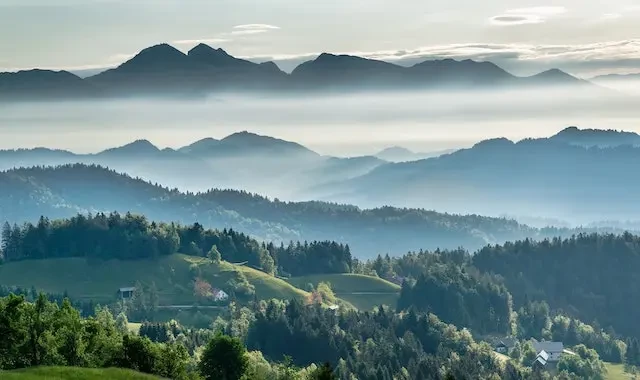
The picturesque French countryside is a captivating and idyllic landscape that showcases the beauty and charm of rural France. Characterized by rolling hills, meandering rivers, quaint villages, and vibrant fields, the French countryside offers a serene and enchanting escape from bustling cities. Let's delve into what makes the French countryside so captivating.
- Natural Beauty: The French countryside is blessed with diverse and breathtaking natural landscapes. From the lavender fields of Provence to the sunflower fields of the Loire Valley, each region has its own unique beauty. Verdant vineyards, majestic forests, serene lakes, and meadows carpeted with wildflowers create a visual feast that delights the senses. The countryside is also home to abundant wildlife, offering opportunities for birdwatching, hiking, and peaceful nature walks.
- Charming Villages: One of the hallmarks of the French countryside is its picturesque villages. These small, often medieval, settlements exude charm and tranquility. Cobblestone streets, flower-filled balconies, ancient stone houses, and quaint village squares transport visitors back in time. Exploring these villages allows for a glimpse into the authentic French way of life, where locals greet each other in the bakeries, cafés, and open-air markets that are the heart of village life.
- Historical Heritage: The French countryside is steeped in history and boasts a rich cultural heritage. Ruined castles perched atop hills, ancient Roman ruins, and well-preserved medieval towns bear witness to centuries of history. Exploring the countryside provides opportunities to visit châteaux, abbey ruins, and fortified villages that offer insights into the region's past. The countryside also houses historical landmarks, such as the prehistoric cave paintings of Lascaux or the ancient monastic island of Mont-Saint-Michel.
- Culinary Delights: The French countryside is renowned for its gastronomy, which showcases fresh, local produce and traditional recipes. Each region has its own culinary specialties, from the hearty cassoulet of the Southwest to the delicate cheeses of Normandy. Exploring the countryside allows visitors to sample regional delicacies, visit farmers' markets, and indulge in farm-to-table experiences. Vineyards, orchards, and local producers offer wine tastings, apple picking, and other agritourism activities that celebrate the bounty of the land.
The best time to visit the French countryside depends on personal preferences and the activities you wish to pursue:
- Spring: Spring, from April to June, is a wonderful time to visit when the countryside bursts into vibrant colors. The weather is mild, and the landscapes are adorned with blossoming flowers and blossoming trees. It's an ideal season for leisurely walks, picnics, and exploring gardens.
- Summer: The summer months, from June to August, offer longer days, warmer weather, and a lively atmosphere. It's a popular time for outdoor activities like cycling, hiking, and visiting local festivals. However, keep in mind that some regions can be crowded with tourists during this time.
- Autumn: Autumn, from September to November, is a beautiful season characterized by golden foliage and harvest time. The countryside is less crowded, and the mild weather makes it pleasant for outdoor activities. It's also an excellent time for wine enthusiasts, as vineyards are busy with the grape harvest.
- Winter: Winter, from December to February, brings a quiet and peaceful ambiance to the countryside. While some activities and attractions may have limited availability, it can be an ideal time for cozy retreats, exploring historical sites, and enjoying the festive atmosphere of rural villages during Christmas markets.
10. The Glamour of the French Riviera
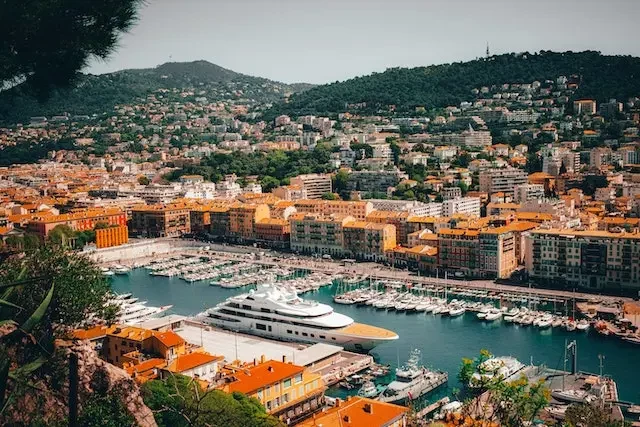
The French Riviera, also known as the Côte d'Azur, is a glamorous and enchanting coastal region in southeastern France. Renowned for its stunning beaches, luxurious resorts, vibrant nightlife, and celebrity allure, the French Riviera has long been a playground for the rich and famous. Let's explore what makes the French Riviera so glamorous.
- Stunning Coastline: The French Riviera boasts a breathtaking coastline that stretches along the Mediterranean Sea. Pristine sandy beaches, crystal-clear azure waters, and dramatic cliffs create a picturesque setting. From the famous Promenade des Anglais in Nice to the glamorous beach clubs of Saint-Tropez, the region offers a variety of beach destinations that cater to different preferences, whether you seek relaxation, water sports, or trendy seaside lounging.
- Luxurious Resorts: The French Riviera is synonymous with luxury and opulence. The region is home to some of the world's most prestigious resorts, including Cannes, Monaco, and Saint-Jean-Cap-Ferrat. These resorts feature luxurious accommodations, exclusive boutiques, Michelin-starred restaurants, and world-class spas. The Riviera's glamorous reputation is enhanced by its association with major events like the Cannes Film Festival and the Monaco Grand Prix, which attract international celebrities and jet-setters.
- Art and Culture: The French Riviera has a rich artistic and cultural heritage. The city of Nice, in particular, was a magnet for renowned artists like Henri Matisse and Marc Chagall, who drew inspiration from the region's vibrant light and stunning landscapes. The area is home to numerous museums, galleries, and cultural institutions that showcase both classic and contemporary art. The influence of art is visible in the architecture, festivals, and cultural events that enrich the Riviera's allure.
- Vibrant Nightlife: The French Riviera comes alive at night, offering a vibrant and glamorous nightlife scene. Cities like Cannes, Nice, and Saint-Tropez are renowned for their stylish bars, chic nightclubs, and beachside parties. From sipping cocktails at trendy rooftop lounges to dancing the night away at exclusive clubs, the Riviera offers a diverse range of nocturnal entertainment options for those seeking a glamorous and unforgettable experience.
11. Normandy: A Historical Gem
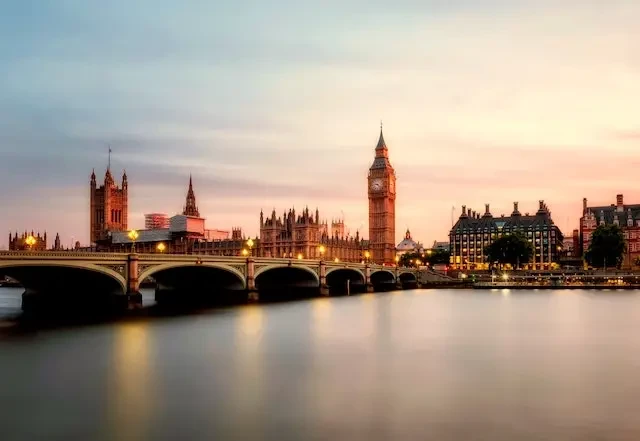
Normandy, a region in northern France, is a historical gem that holds a significant place in European history. Known for its rich heritage, stunning landscapes, and notable landmarks, Normandy offers a captivating journey through time. Let's explore what makes Normandy a historical treasure.
- Historic Events: Normandy played a pivotal role in several significant historical events. The region is most famous for being the site of the D-Day landings during World War II, when Allied forces invaded German-occupied France in 1944. The Normandy beaches, such as Omaha Beach and Utah Beach, stand as powerful reminders of the bravery and sacrifice exhibited during this historic moment. Normandy's historical significance extends beyond World War II, with traces of the Viking invasion, medieval battles, and the Hundred Years' War woven into its cultural fabric.
- Impressive Architecture: Normandy is home to impressive architectural wonders that reflect its rich history. The region's magnificent cathedrals are a testament to its medieval heritage. The UNESCO-listed Mont-Saint-Michel, a mystical abbey perched on a rocky island, is an iconic landmark and a must-visit destination. The city of Rouen showcases a blend of architectural styles, from the stunning Gothic Cathedral of Rouen to the half-timbered houses that line its picturesque streets. Exploring Normandy's towns and cities unveils a treasure trove of architectural marvels.
- Historic Sites: Normandy boasts a wealth of historical sites that offer insights into its past. The Bayeux Tapestry, an embroidered masterpiece depicting the Norman Conquest of England, is a fascinating artifact that chronicles an important chapter in European history. The medieval town of Honfleur, with its charming harbor and preserved timber-framed buildings, evokes the region's maritime heritage. The Château de Falaise, birthplace of William the Conqueror, provides a glimpse into the life of one of Europe's most influential figures. These sites and more make Normandy a haven for history enthusiasts.
- Cultural Heritage: Normandy's cultural heritage is deeply intertwined with its historical legacy. The region has a rich artistic and literary tradition, with figures like Claude Monet and Gustave Flaubert finding inspiration in its landscapes. Norman cuisine, renowned for its fresh seafood, creamy cheeses, and apple-based delights, reflects the region's agricultural abundance. Normandy's cultural festivals, such as the Medieval Festival of Bayeux and the Joan of Arc Festival in Rouen, celebrate the region's history and traditions, providing immersive experiences for visitors.
The best time to explore Normandy depends on personal preferences and interests:
- Spring and Summer: The months of May to September offer pleasant weather and a vibrant atmosphere. This period allows for visits to the region's historical sites, outdoor activities, and participation in cultural events and festivals.
- Autumn: The autumn months, from September to November, bring mild weather and fewer crowds. It's an ideal time to appreciate the region's landscapes adorned with golden hues, visit museums, and enjoy the local cuisine.
- Winter: The winter season, from December to February, offers a tranquil atmosphere and the opportunity to experience Normandy's historical sites and architectural wonders without the crowds. The region's cozy restaurants and cafés provide a warm respite during this time.
12. Lyon: Gastronomy and Renaissance Architecture
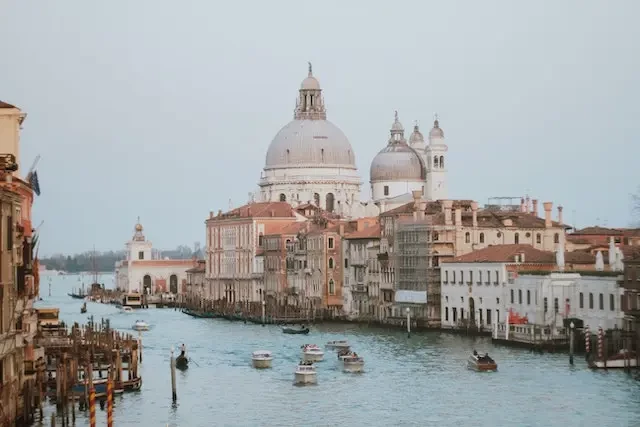
Lyon is a city that delights both the palate and the eyes. Renowned as the gastronomic capital of France, Lyon offers a delectable culinary experience with its vibrant food markets, Michelin-starred restaurants, and traditional bouchons. Explore the UNESCO-listed Old Town, with its Renaissance architecture and narrow cobblestone streets. Visit the Basilica of Notre-Dame de Fourvière for panoramic views of the city, and immerse yourself in Lyon's rich cultural heritage.
13. The Charming French Basque Country

The French Basque Country, located in the southwestern part of France, is a region known for its charm, unique culture, and beautiful landscapes. It is situated in the Pyrenees Mountains and stretches along the Atlantic coast, bordering Spain's Basque Country.
The French Basque Country is characterized by its vibrant Basque culture, which is reflected in its architecture, language, traditional festivals, and gastronomy. The region boasts picturesque towns and villages with distinct Basque-style houses adorned with colorful shutters and timber frames. Places like Bayonne, Biarritz, Saint-Jean-de-Luz, and Espelette are popular destinations that offer a blend of coastal beauty, historical significance, and Basque traditions.
One of the highlights of the French Basque Country is its breathtaking natural scenery. From rolling green hills and lush valleys to sandy beaches and rugged cliffs, the region offers diverse landscapes for outdoor enthusiasts. The Pyrenees Mountains provide excellent opportunities for hiking, while the Atlantic coast is ideal for surfing, swimming, and sunbathing.
When it comes to the best time to visit the French Basque Country, the region enjoys a mild and temperate climate throughout the year. However, the summer months (June to September) are the most popular among tourists due to the warm weather and longer daylight hours. This is the peak tourist season, especially in coastal towns like Biarritz, which attracts beach lovers and surfers.
If you prefer to avoid large crowds and experience a more tranquil ambiance, the shoulder seasons of spring (April to May) and autumn (September to October) are also great times to visit. During these months, the weather is pleasant, and you can explore the region without the summer rush. Additionally, the spring season brings beautiful blooming flowers, and autumn offers stunning foliage colors in the countryside.
Winter (December to February) in the French Basque Country is relatively mild compared to other parts of France. While the weather can be chilly, it's an excellent time for those interested in hiking in the mountains or enjoying a cozy retreat in the countryside.
Top Hotels in France: Discover the Epitome of Luxury and Comfort
France boasts an impressive array of world-class hotels, each offering a unique experience. These establishments have earned their reputation through exceptional service, stunning design, and extraordinary amenities. Let's delve into the top hotels that make France a dream destination for travelers around the globe.
1. Hôtel Ritz Paris: Where Elegance Meets History
Located in the heart of Paris, the Hôtel Ritz Paris is a legendary landmark renowned for its timeless elegance and storied history. This iconic hotel has welcomed royalty, celebrities, and discerning travelers for over a century. The epitome of luxury, the Hôtel Ritz Paris features lavishly appointed rooms, exquisite dining options, and a world-class spa. Immerse yourself in the splendor of this historic gem and experience the art of refined living.
2. Four Seasons Hotel George V: An Oasis of Sophistication
Nestled near the Champs-Élysées in Paris, the Four Seasons Hotel George V exudes unparalleled sophistication and charm. This five-star hotel presents a harmonious blend of classical elegance and contemporary style. From its meticulously designed rooms to its Michelin-starred restaurants, every aspect of the Four Seasons Hotel George V reflects a commitment to luxury and impeccable service. Indulge in the opulence and embrace the art of French hospitality.
3. Hotel Martinez: A Riviera Retreat
Heading to the French Riviera? Look no further than Hotel Martinez in Cannes. This iconic establishment is a testament to luxury and glamour, offering stunning views of the Mediterranean Sea and lavish accommodations. Relax on the private beach, rejuvenate at the spa, and savor gourmet cuisine at the hotel's world-class restaurants. Hotel Martinez captures the essence of the French Riviera, making it the ultimate destination for those seeking an unforgettable coastal getaway.
4. Le Meurice: A Regal Escape in Paris
Situated in the heart of Paris, Le Meurice embodies regal opulence and timeless beauty. With its lavish interiors, stunning views of the Tuileries Garden, and Michelin-starred dining options, this palace hotel offers a truly royal experience. Immerse yourself in the refined atmosphere of Le Meurice and bask in the splendor of its luxurious amenities. This iconic hotel is a favorite among celebrities and discerning travelers who appreciate the finer things in life.
5. La Réserve Paris Hotel and Spa: A Sanctuary of Tranquility
Tucked away in a quiet residential area near the Champs-Élysées, La Réserve Paris Hotel and Spa is a haven of tranquility amidst the bustling city. This elegant hotel exudes a sense of intimacy and exclusivity, providing guests with personalized service and utmost privacy. Indulge in the luxurious spa treatments, unwind in the serene garden, and savor exquisite cuisine at the hotel's Michelin-starred restaurant. La Réserve Paris Hotel and Spa offers a truly immersive experience of relaxation and refinement.
6. Château de Bagnols: A Fairytale Escape
Escape to the enchanting world of Château de Bagnols, a magnificent castle nestled in the heart of the Beaujolais vineyards. This meticulously restored 13th-century fortress offers a truly magical experience. Step into the pages of a fairytale as you wander through the lush gardens, indulge in gourmet cuisine, and unwind in luxurious suites adorned with antique furnishings. Château de Bagnols is a hidden gem where history and luxury blend seamlessly.
7. Le Bristol Paris: Timeless Elegance
For those seeking refined elegance and impeccable service, Le Bristol Paris is a destination of choice. Located on the prestigious Rue du Faubourg Saint-Honoré, this palace hotel boasts spacious rooms, a three-Michelin-starred restaurant, and a rooftop swimming pool with panoramic views of the city. Embrace the timeless charm of Le Bristol Paris and experience the epitome of French hospitality.
8. Hôtel du Cap-Eden-Roc: Where Glamour Meets the Mediterranean
Perched on the edge of the Cap d'Antibes peninsula, Hôtel du Cap-Eden-Roc is an iconic symbol of glamour and luxury on the French Riviera. This legendary hotel has been a favorite among artists, writers, and Hollywood stars for decades. Indulge in the lavish amenities, including a private beach, waterfront villas, and exquisite dining options. Hôtel du Cap-Eden-Roc offers a truly glamorous retreat where the beauty of the Mediterranean merges with impeccable service.
9. Hôtel de Crillon: A Historic Landmark
Situated in a palatial building overlooking the Place de la Concorde in Paris, Hôtel de Crillon is a historic landmark that seamlessly blends classic elegance with contemporary sophistication. This prestigious hotel features lavishly decorated rooms, a renowned spa, and Michelin-starred dining options. Immerse yourself in the grandeur of Hôtel de Crillon and experience the allure of its storied past.
10. Cheval Blanc Courchevel: Luxury in the French Alps
Nestled in the exclusive ski resort of Courchevel, Cheval Blanc Courchevel offers the ultimate luxury experience in the French Alps. This prestigious hotel combines Alpine charm with contemporary design, providing guests with unparalleled comfort and breathtaking mountain views. Indulge in the world-class ski facilities, relax at the spa, and savor exquisite gastronomy at the hotel's Michelin-starred restaurant. Cheval Blanc Courchevel is a winter paradise for discerning travelers seeking a seamless blend of adventure and opulence.
Transportation Options In Paris airlines and Airport
In France, there are several transportation options available for both domestic and international travel. The country is served by multiple airports, and there are various airlines that operate flights within France and to international destinations.
Airports in France:
- Paris Charles de Gaulle Airport (CDG): Located near Paris, Charles de Gaulle Airport is the largest and busiest airport in France. It serves as a major hub for both domestic and international flights.
- Paris Orly Airport (ORY): Situated near Paris, Orly Airport is the second-largest airport in the country. It primarily handles domestic and European flights, along with some long-haul international routes.
- Nice Côte d'Azur Airport (NCE): Located in Nice on the French Riviera, this airport is a major hub for travel to and from the southern region of France. It serves both domestic and international flights.
- Lyon-Saint Exupéry Airport (LYS): Situated near Lyon, this airport is an important gateway to the Auvergne-Rhône-Alpes region. It offers domestic and international flights, connecting Lyon to various destinations.
- Marseille Provence Airport (MRS): Located near Marseille, this airport serves as a major transportation hub for the Provence-Alpes-Côte d'Azur region. It offers domestic and international flights.
- Toulouse-Blagnac Airport (TLS): Situated near Toulouse, this airport is an important hub for the Occitanie region. It serves domestic and international flights.
- Bordeaux-Mérignac Airport (BOD): Located near Bordeaux, this airport connects the Nouvelle-Aquitaine region to domestic and international destinations.
- Nantes Atlantique Airport (NTE): Situated near Nantes, this airport serves the western region of France, offering domestic and international flights.
Airlines:
- Air France: The national carrier of France, Air France operates domestic and international flights from major airports in France, including Paris Charles de Gaulle and Paris Orly.
- easyJet: A popular low-cost airline, easyJet operates flights from several airports in France, including Paris Charles de Gaulle, Paris Orly, Nice, Lyon, Marseille, Toulouse, Bordeaux, and Nantes.
- Ryanair: Another well-known low-cost carrier, Ryanair operates flights from airports across France, including Paris Beauvais-Tillé, Marseille, Bordeaux, Nantes, and more.
- Transavia: Transavia is a low-cost airline that operates flights from Paris Orly, Lyon, Nantes, and other airports in France.
- British Airways, Lufthansa, Emirates, and other major international airlines also serve airports in France, providing connections to destinations worldwide.
FAQs
What is the best time to visit France?
The best time to visit France is during the spring (April to June) and fall (September to October) seasons when the weather is pleasant, and the tourist crowds are smaller.
Do I need a visa to visit France?
If you are a citizen of the European Union or certain other countries, you may not need a visa for short visits to France. However, it is advisable to check the visa requirements based on your nationality before traveling.
Can I get by with English in France?
While French is the official language, many people in popular tourist areas and larger cities speak English to some extent. However, learning a few basic French phrases can be helpful and appreciated.
What are some must-try French dishes?
Some must-try French dishes include croissants, escargots, coq au vin, bouillabaisse, and crème brûlée. Don't forget to pair your meals with a glass of fine French wine.
Is it safe to travel in France?
France is generally considered safe for travelers. However, it's always a good idea to take common safety precautions, such as being aware of your surroundings, avoiding isolated areas at night, and keeping an eye on your belongings.













